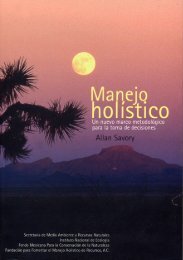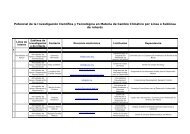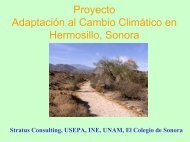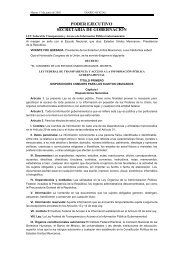Modeling deforestation baselines using GEOMOD - Instituto ...
Modeling deforestation baselines using GEOMOD - Instituto ...
Modeling deforestation baselines using GEOMOD - Instituto ...
Create successful ePaper yourself
Turn your PDF publications into a flip-book with our unique Google optimized e-Paper software.
Finalizing Avoided Deforestation Baselines<br />
I. INTRODUCTION<br />
The Spatial <strong>Modeling</strong> Approach<br />
Spatial modeling, as we define it (M. Hall et al. 2000) is the application of a FORTRAN (or other computer<br />
language)-based model that uses spatially distributed data to simulate landscape dynamics. In the case of<br />
land use change modeling it implies that the spatial distribution of various factors, such as topography,<br />
plays an important role in determining where humans exploit the landscape. We apply <strong>GEOMOD</strong>2,<br />
developed by researchers at SUNY College of Environmental Science and Forestry (Hall, et al. 1995a;<br />
1995b with funding from the US Department of Energy, Carbon Dioxide Research Program, Atmospheric<br />
and Climatic Change Division), to estimate the business-as-usual baseline for <strong>deforestation</strong> in two states of<br />
Mexico—the Calakmul region of Campeche and the Meseta Purépecha region of Michoacan.<br />
Based on the “maximum power principle” (Odum 1983), the model assumes and tests whether those<br />
factors which are most likely to impact an individual farmer’s energy return on investment (EROI) are<br />
statistically significant (Hall, Cleveland and Kaufmann, 1986). These factors include topographic position<br />
(elevation and steepness of slope), distance from rivers, roads and already established settlements, and<br />
socio-economic factors such as infrastructure. The model allows for regional stratification to capture<br />
different government policies in different political units that would affect land clearing and land tenure. It<br />
also includes the option to impose, or not, the contiguity rule in simulation. This rule limits land clearing to<br />
cells that are adjacent to cells already cleared. The search window distance used to impose contiguity<br />
around already-developed land can be adjusted to capture the difference between clearing for shifting<br />
cultivation, and clearing for industrialized agriculture. The model is calibrated by assigning weights to<br />
candidate map cells based on the empirical importance of each driver in explaining the spatial pattern of<br />
land use change at one point in time. It then simulates that change between that point in time and a later<br />
time. Change can be from forest to non-forest, from non-forest to forest, from forest to degraded forest,<br />
pasture to urban; in other words any pathway of change can be analyzed by the model. The model then<br />
compares these preliminary simulation results against a validation (real) data set (i.e. a map of time two)<br />
which is not used in weighting the pattern drivers. The test of goodness of fit for each simulated map<br />
produced is based on both the percent of cells simulated correctly and the Kappa Index of Agreement<br />
(Pontius et al. 2001). We use the ‘kappa-for-location’ index, rather than the ‘kappa-for-quantity’ because in<br />
all cases for validation we already know from the satellite imagery the quantity of cells that have been<br />
deforested or degraded between the two time periods.<br />
II. HYPOTHESIS<br />
We test three hypotheses. (1) <strong>GEOMOD</strong> should generate a more accurate estimate of the carbon benefits<br />
derived from a region than a non-spatial approach because the vegetation types, and hence carbon<br />
content, varies across a landscape and <strong>GEOMOD</strong> has the ability to specify WHERE <strong>deforestation</strong> is “most<br />
likely” to occur. (2) We can predict regional or project-specific results in the same model simulations. And<br />
(3) the use of <strong>GEOMOD</strong>, in particular, removes some of the “counterfactual uncertainty” (Moura-Costa,<br />
2001; Kerr, 2001) inherent in other methods and other spatial models used to estimate the baseline<br />
scenarios because <strong>GEOMOD</strong> employs a standardized procedure of assessment of this “counterfactual<br />
uncertainty (‘Kappa-for-location’ statistic, Pontius, 2000).<br />
III. How <strong>GEOMOD</strong> works<br />
III. A. Data Collection and Preparation<br />
The model requires as input the following mapped information:<br />
Winrock International<br />
A- 2



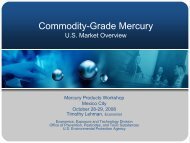

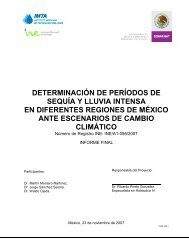

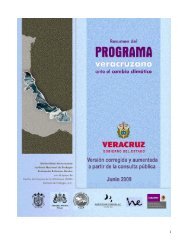
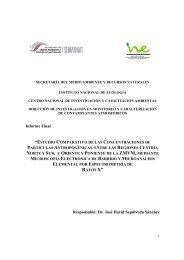
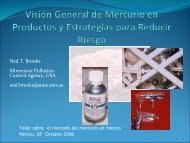

![John Ganzi [Modo de compatibilidad]](https://img.yumpu.com/22669860/1/190x132/john-ganzi-modo-de-compatibilidad.jpg?quality=85)

